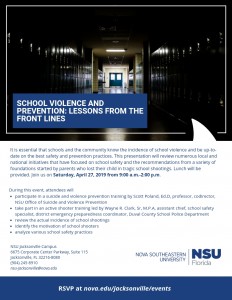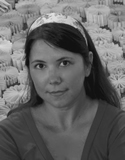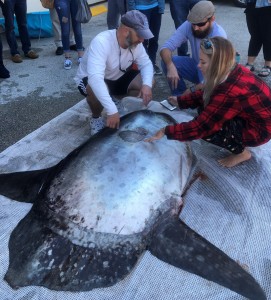RSVP
Space is limited and an RSVP is required. Please call (954) 262-0258 or register online here:
Faculty & Staff News

Join the Nova Southeastern University (NSU) Jacksonville Campus on Saturday, April 27, 2019 from 9:00 a.m.-2:00 p.m. for “School Violence and Prevention Conference: Lessons from the Front Lines”. It is essential that schools know the incidence of school violence and be up-to-date on the best safety and prevention practices. This presentation will review numerous national initiatives that have focused on school safety and the recommendations from a variety of foundations started by parents who lost their child in tragic school shootings. Lunch will be provided.
Prevention Conference: Lessons from the Front Lines”. It is essential that schools know the incidence of school violence and be up-to-date on the best safety and prevention practices. This presentation will review numerous national initiatives that have focused on school safety and the recommendations from a variety of foundations started by parents who lost their child in tragic school shootings. Lunch will be provided.
During this event, attendees will:
This event will be held at the NSU Jacksonville Campus located at 6675 Corporate Center Parkway, Suite 115, Jacksonville, FL 32216 and is free to the general public. Please RSVP at nova.edu/jacksonville to attend. For more information, contact the NSU Jacksonville Campus at nsu-jacksonville@nova.edu or (904) 245-8910.

Tennille Shuster, M.F.A., faculty in the Department of Performing and Visual Arts in NSU’s College of Arts, Humanities, and Social Sciences (CAHSS) created the winning cover design in the design/illustration competition held to celebrate the 10th anniversary of Uppercase magazine, “a quarterly print magazine for the creative and curious: publications that spark the imagination and inspire creativity.” Her design appeared as the cover of the 10th anniversary supplement published in December 2018. As part of the award package, Shuster received an honorarium and complimentary subscription.
 Her approach to the cover design uses abstracted tree rings to communicate the concept of longevity, and to symbolize the annual growth of the magazine. She included a variety of artistic mediums and materials, representing the varied topics covered within the publication over the past decade.
Her approach to the cover design uses abstracted tree rings to communicate the concept of longevity, and to symbolize the annual growth of the magazine. She included a variety of artistic mediums and materials, representing the varied topics covered within the publication over the past decade.
Shuster has received other honors including the Florida Artists’ Book Prize and top prize in the AIGA Miami PosterFest Design for Good Competition. Her work has been published in numerous publications including American Craft and American Libraries magazines and For the Love of Letterpress (A&C Black Publishing). Shuster’s book art is internationally exhibited and resides in public and private collections including the Iraq National Library, Duke University’s Rare Book, Manuscript and Special Collections Library, the Jaffe Center for Book Arts, and the Bienes Museum of the Modern Book, among others.

Over the past several weeks, two rare fish enhanced the Halmos College Fish Collection: a crested oarfish and a sharptail Mola. The crested oarfish Lophotus lacepede was caught on Jan 20, 2019 off South Carolina by the commercial fishing boat F/V Ellen Jean by Captain Greg O’Neill. Captain O’Neill worked with Halmos College faculty member David Kerstetter, Ph.D. when Kerstetter was in graduate school. With the help of a collaborating fish dealer in Fort Pierce, the oarfish arrived at the Oceanographic campus on January 23. The oarfish measure 135cm in length (over four feet).

David Kerstetter, Glenn Goodwin, and Abby Nease discussing plans for the sharptail mola dissection, with members of Amy Hirons’ “Oceanography”.
The sharptail mola Masturus lanceolatus washed up dead on Hollywood Beach on January 29 and was reported by Steve Salafrio of the City of Hollywood to Halmos Research Scientist Derek Burkholder, Ph.D., who arranged with Halmos Ph.D. candidate Glenn Goodwin to bring it to the Oceanographic campus. It measured 165 cm in length (over five feet).
Both are extremely rare and poorly-known species, almost never seen in fresh condition and rarely even in museum collections. Halmos faculty member Chris Blanar, Ph.D. and Halmos College graduate and undergraduates examined the fresh specimens for parasites, finding several on each fish. The parasite findings are so unusual that this finding is being written into student manuscripts.
Once the preliminary research is completed, both fish will be added to the Halmos College teaching collection to be used in graduate and undergraduate marine biology courses.

Save the date for The Eye Care Institute’s annual Optical Style Show on April 3 from 11:00 a.m.–7:00 p.m. at the Davie Optical located on the 2nd floor of the Sanford L. Ziff Health Care Center.
For one day only, all frames and lenses will be 25% off.
The full collections of top brands, such as Tom Ford, Kate Spade, Gucci, Fendi, Nike, Moschino, MCM, Guess and more, will be showcased. Throughout the day, there will be music, food, and raffles in addition to a grand prize drawing at the end of the event!
Come meet Froggy from Y100 from 5:00 p.m. – 7:00 p.m.!
Show Location
The Eye Care Institute–Davie
Sanford L. Ziff Health Care Center
3200 South University Drive, Fort Lauderdale, Florida 33328
(954) 262-4200
Prizes and giveaways only at show location.

Nova Southeastern University’s (NSU) Marine Environmental Education Center (MEEC) at the Carpenter House is dedicated to understanding and protecting one of the ocean’s most beloved creatures – the sea turtle. As part of their mission, MEEC staff interact with visitors year-round educating them about these majestic animals, and part of those efforts include the center’s “forever” resident green sea turtle, Captain.
She calls the MEEC home as she was injured and is unable to be returned to the open ocean. Its Captain who inspired a local artist’s latest gallery exhibit: “Captain is Hollywood” by artist Maria Isabel Lazo.
The exhibit is featured at ArtsPark at Young Circle Gallery, located at 1 N Young Cir, Hollywood and is scheduled from January 23 through March 17, 2019. Because of her love of the ocean and involvement at the MEEC, Lazo has created various artworks that are for sale, with a percentage of the proceeds going to the education center.
For more information: https://www.hollywoodfl.org/Calendar.aspx?EID=6710

Join President George L. Hanbury II, Ph.D., at one of NSU’s 2019 town hall meetings for employees! Engage with NSU’s president in dialogue about NSU’s present and future.
In order to access any of the employee town hall meetings from your computer, please click on the streaming link and sharkmedia player will appear. Click on the play triangle within the player to watch the stream. A looping video will be broadcast approximately 20 minutes before the event start time. All employee meetings will be streamed for interactive online dialogue (so you can attend from your home or office)
Click here for all dates and times.

Bindu S. Mayi, M.Sc., Ph.D., professor of microbiology at NSU’s College of Medical Sciences educates people on the measles outbreak.
You’ve probably heard about the measles outbreak that is going on in Washington (WA) state right now. As of January 27, 2019, there have been 35 cases reported, with the youngest patient being just a year old. The state of WA is now in a state of emergency, a step that Governor Jay Inslee had to take in order to deal with this highly contagious and deadly, childhood rash and fever illness.
There are a few relevant facts about measles that everyone needs to know. Measles is contagious four days before symptoms develop; this means, the infected person could be and would be out in the community, shedding viruses that can easily spread to non-immune individuals.
How does this spread happen? The act of coughing, sneezing, talking, laughing or even just breathing allows the infected person to release moist droplets carrying infectious viruses. In fact, measles has an R nought factor of 12 – 18, which means one infected individual can spread the virus to 12 – 18 individuals in a totally susceptible (vulnerable) population such as an unimmunized population. The non-immune individuals breathe in these infectious droplets and in turn, become incubators of the measles virus.
What are the symptoms that alert someone about measles? The patient develops a fever, along with cough, runny nose & congestion, conjunctivitis and a high sensitivity to light (aka photophobia). Typically, we suspect measles only when Koplik’s spots appear 2 days later. These spots look like little grains of salt that are surrounded by a red zone – they appear on the insides of the cheeks, right across from the molars. These spots are a characteristic feature of measles, and within 24 hours, are accompanied by the measles rash. At this time, the patient may also show high fever (104ο Fahrenheit). Starting on the head, the measles rash takes one or two days to cover the entire body, including palms of the hands and soles of the feet. The rash begins as flat, red spots that may carry small, raised bumps on them. Eventually, these spots start blending together as the rash spreads through the body.
What makes measles worse? Vitamin A deficiency and malnutrition makes measles worse. In developing countries, measles kills as many as 1 out of 4 infected patients. It is also the leading cause of blindness in Africa. Measles patients also develop a generalized suppression of the immune system, which can last up to three years, leaving them vulnerable to other deadly infections.
How do you treat measles? There aren’t any antibiotics or antiviral drugs that will kill the measles virus or help you recover quickly from measles. The best treatment includes reducing fever, hydrating well, resting and administering vitamin A to patients with low levels of this vitamin. If there are secondary bacterial infections, these will need to be treated with antibiotics.
How can you protect the vulnerable in your care? Vaccination is the most effective approach. The measles component of the MMR vaccine is recommended as a two dose regimen, starting at 12 – 15 months of age, with a booster shot given at 4 – 6 years of age. The two doses result in about 97% of the vaccinees being protected against measles.
Is there mercury in the measles vaccine? No. The MMR vaccines do not contain thimerosal (which is a mercury-based preservative).
Is there any recourse for someone who is vulnerable and has already been exposed? Absolutely, yes. We can administer the measles vaccine to immunocompetent individuals within three days of knowing they have been exposed to someone with measles. As you know, this is not always easy, as individuals are contagious four days before symptoms begin. You can also administer a shot that carries pre-made antibodies against the measles virus, within six days of definite exposure to the measles virus.
How effective are these approaches? A research study done in NYC showed the vaccine to be approximately 83% effective at preventing measles when given after exposure, while the pre-made antibodies were fully protective!
Why do we want to prevent measles? Pregnant women with measles may be at an increased risk of miscarriages, premature births or low birth weight babies. Approximately 30% of infected individuals develop one or more complications such as pneumonia, ear infections and diarrhea. One in every 1,000 children who develop measles will develop encephalitis (inflammation of the brain), which can lead to deafness or intellectual and developmental disabilities. One or two in every 1,000 children with measles, will actually die from it. If death doesn’t claim an ill child, they may be at risk of a serious complication called SSPE. Short for subacute sclerosing panencephalitis, SSPE is a very rare, but fatal disease. Research studies done in the United Kingdom show that 18 out of every 100,000 patients who develop measles when they are under a year of age, and 1.1 out of every 100,000 if you are infected after five years of age, will go on to develop SSPE. The interesting thing is, symptoms of SSPE may take anywhere from one month to 27 years after measles, to develop. In another year or two post symptoms, the patient with SSPE will succumb to it – we do not have a cure for it at the moment. Although scientific literature shows us that two patients with SSPE were treated successfully in the past, we have not been able to reproduce this protocol in others and treatment is accompanied with its own undesirable side effects. So, our best approach really is to build up our herd immunity, our collective community immunity and the most effective way to do that is by adopting the MMR regimen. Another approach we can all take, and should take, is to cover our coughs and sneezes – the idea is to trap any potentially infectious droplets (dispelled by the cough and sneeze) and prevent them from infecting vulnerable individuals. One last thing that can protect us against multiple infectious agents is adequate hand hygiene – have clean hands before we touch our eyes, nose or mouth and before we eat! Saying No to infections is easy – it starts with awareness.

NSU’s College of Arts, Humanities, and Social Sciences (CAHSS) is pleased to announce that the Intellectual Conversations series continues this winter with the theme, “Boundaries and Borders: Beyond Open and Closed.”
On January 24, 2019, Ben Mulvey, Ph.D., faculty in the Department of History and Political Science facilitated the conversation entitled, “Why Undergraduate Majors should be Abolished.”
Please save these upcoming date:
March 13, 2019, Marlisa Santos, Ph.D., faculty in the Department of Literature and Modern Languages will facilitate the conversation entitled, “Straddling Hollywood’s Gender Boundaries: Ida Lupino’s Auteur Journey.”
These conversations will take place from 12:00-1:00pm in the Mailman Hollywood Auditorium on the second floor.
If you have questions, please contact Stephen Levitt, LL.M., faculty in the Department of History and Political Science and the Intellectual Conversations Committee chair, at levitts@nova.edu
Celebrate Black History Month at NSU Art Museum with drop-in art workshops for all ages inspired by African American artists featured in the current exhibition Remember to React.
Starry Nights is FREE and open to the public. Plus, enjoy 2-for-1 drinks in the Museum Café.
Free First Thursdays Starry Nights offers FREE museum admission on the first Thursday of every month, from 4 – 8 pm.
Enjoy:
2-for-1 specials on wine and craft beer
light bites in the Museum Café
free admission to exhibitions
hands-on art projects for all ages.
Schedule:
Micro Mini Muse (children ages 3 – 5) : 5- 7:30 pm
In celebration of Black History Month, participants will create their own masks inspired by traditional African art and art of the African Diaspora featured in our current exhibition, Remember to React.
Mini Muse (children ages 5-10): 5 – 7:30 pm
Participants and their families will make mixed media masks influenced by art from Western Africa and the African Diaspora featured in our exhibition Remember to React. This workshop is in conjunction with Black History Month.
Drop-In Arts for teens and adults: 5 – 7:30 pm
Create your own historic word art piece inspired by American conceptual artist Glenn Ligon and his neon installation Untitled (I live on my shadow), 2009. This workshop is in celebration of Black History Month.
Plus additional surprise events.
FREE and open to the public. For more information, please call 954-262-0258.

NSU Art Museum’s art instructor will guide participants through an en plein air (outdoor painting) experience at the Historic Stranahan House Museum in downtown Fort Lauderdale and introduce them to the technical and practical aspects of the works by French Impressionist painter Pierre-Auguste Renoir and American painter William J. Glackens in our current exhibition, William J. Glackens and Pierre-Auguste Renoir: Affinities and Distinctions. The cost to attend is $15 for members; $25 for non-members. Fee includes supplies; 20 participants maximum.
Space is limited and an RSVP is required. Please call (954) 262-0258 or register online here: